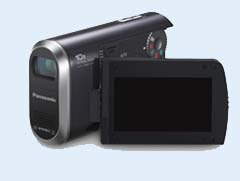
LONDON, England (CNN) -- A British design graduate has come up with a way to make the road a safer place for motorbike riders, using technology originally developed for jet fighter pilots.
Piers Tucker, 24, of Yorkshire, has created a motorbike helmet that is fitted with GPS technology, which displays information about what speed the bike is traveling.
The device means that the driver does not have to take their eyes off the road to monitor their speed.
Tucker says the idea is based on "Head Up Display" systems used by fighter pilots.
Although he does not ride a motorbike himself, he is a Formula One enthusiast and also has a passion for electronics and physics.
His invention is a result of combining the two interests, he says.
He believes the device will be a lifesaver and he would like to see it become a common accessory for motorbike riders within five years, used by both racers and everyday commuters.
"As soon as you take your eyes off the road, you're potentially causing a hazard," Tucker says.
The helmet is fitted with a small display unit, measuring approximately 2.5cm x 2cm, which has an LCD screen and can be seen to the left of the wearer's peripheral vision.
It displays the speed at which the motorbike is traveling, whether the bike has its indicators on by displaying a light either side of the screen, and what gear the bike is in.
When the indicators are on, the unit also makes a sound so that the driver is aware both visually and aurally.
Inside the display unit is a GPS chip, which measures the movement of the bike in nautical speed and converts it into a miles-per-hour reading. It then projects it on to a screen within the helmet.
Tucker says the technology is a lot more accurate than the speedometers currently fitted in most standard vehicles.
He believes the system could also be used by parachute jumpers and slalom skiers and could eventually replace the need for dials on a motorbike dashboard.
His prototype is the result of months of research and experimentation, testing the GPS technology on a second hand racing-standard helmet he purchased off eBay.
A lot of his research was undertaken in sophisticated multimedia laboratories and testing was done by high-tech simulators, both are at Brunel University in London, where Tucker has recently graduated with an industrial design and technology degree.
Motorcycle News acting editor Sean Warwick told CNN he believes there is a big market for Tucker's idea.
"I think a lot of motorcyclists would be very excited about it," he says.
"The main benefit, from a motorcyclist's point of view, is that they have to spend so much time watching out for dangers on the road because they are that much more vulnerable."
Warwick says the potential for using GPS technology within motorcycle helmets is great. It could also be used to detect hazards on the road, including potholes and manhole covers, he says.
Some car manufacturers have experimented with a similar system, displaying speed information on the vehicle's windscreen, in the driver's line of vision.








